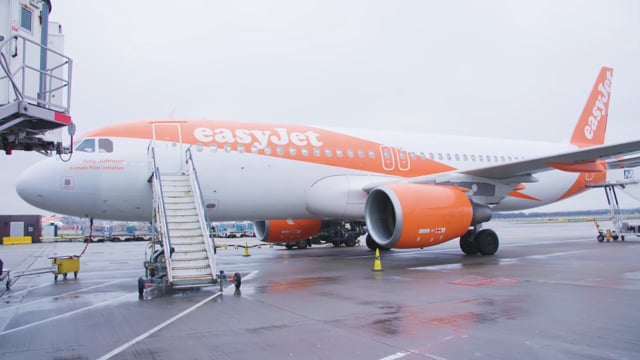In just over 25 years, the low-cost carrier has grown into one of the world’s largest airlines. But how did it acquire its colour and what name did it nearly get instead? Key.Aero speaks to Tony Anderson, the firm’s first marketing director, to find out
By all accounts, easyJet has a very strong brand identity which is supported by the use of a specific shade of orange. In fact, you simply have to show most people the colour and they’ll be able to tell you exactly what company it belongs to.
“Stelios chose the orange as he wanted a colour he could own,” recalls Anderson, as he chats over Zoom from his home in Cambridge. “He flicked through one of these pallets of shades of orange and settled on 021C which was our Pantone reference and is ‘easyOrange’ as it’s known today.”

Anderson – who is the author of easyJet Rising, a book on how the Luton-based start-up took on the aviation establishment – was the third employee on the airline’s books when he joined as its director of marketing in 1995.
He says the name ‘easyJet’ wasn’t a foregone conclusion and in fact, it could have been called something entirely different.
“The working title originally was ‘Stelair’ but that was before my time,” reveals Anderson. “Stelios likes to say that sanity trumped vanity because he had Stelmar which was his shipping company and Stelinvest which was a finance business so Stelair was a logical place to go I guess.”

The former executive says Stelios had a bigger plan than just an airline and eventually wanted to create a collection of different companies all of which would fit under the easyGroup brand. Of course, today this has become a reality and the phrase ‘easy’ has been attached to 17 separate businesses ranging from easyPet to easyCoffee.
“I thought we had our hands full trying to create an airline,” admits Anderson. “Stelios always liked to think big, and he had this concept right from the very start of that overarching family of brands of which the airline was the first one.”
Anderson would later join easyGroup and assume the role of marketing director for the airline’s parent organisation.
Prior to working for the start-up carrier, he had experience at various airlines including British Airways – easyJet’s arch-rival in the beginning – and leisure carrier Thomas Cook. The knowledge of how difficult it was to make it in the industry was clear in Anderson’s mind.
When asked whether he was confident about whether Stelios’ new venture would succeed, he said: “No not entirely and I think those are different times to today.
“Most new airlines fail because they run out of money, and I knew his family had deep pockets, so it wasn’t likely that we’d be running around chasing new investors. I believed that if it worked, he would back it with his family’s money which was substantial.”
Concluding, Anderson says that given the amount of risk associated with starting a new airline, “this was about as good as it gets.
“It was an idea I fundamentally believed in and was well backed, what’s not to like?”
More information about Anderson’s book – easyJet Rising – can be found here. Key.Aero will be publishing further extracts from our exclusive chat over the coming weeks.



